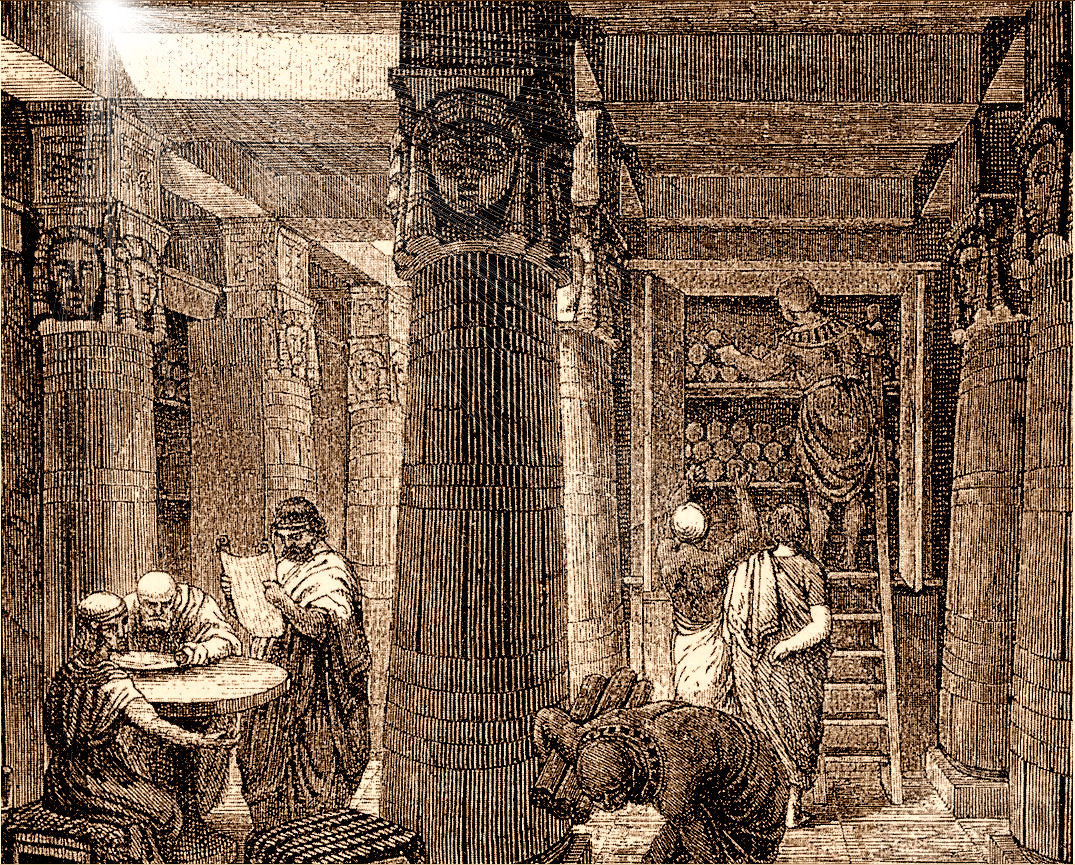There are numerous references to the supposedly book-burning, ignorant Christian. This is mostly the work of Humanist ‘scholars’, who clearly twist the facts to suit their Christophobe bigotries. Here is an example from a book on Oceanography. You would think that the topic would have nothing to do with Christianity, but that doesn’t stop the author from writing about it.
From How the Ocean Works : an introduction to oceanography, by Mark Denny.
The Dark Ages
The notion of a spherical earth survived the Roman absorption of Greek culture, but it was nearly lost to Western Civilization with the fall of the Roman Empire. In 391, for instance, Christian mobs overran the library at Alexandria and burned its invaluable contents.
Mr. Denny packs a number of myths and fallacies into these sentences. Let’s unpack them and learn the truth. We have already seen that the myth of the flat earth was invented by Washington Irving in 1828 (see Myth: The Flat Earth). It has no truth or validity; Medieval thinkers did not believe in a flat earth and there is really no Biblical justification for believing in a flat earth. The Bible is silent on this point. Let’s look at the academic fantasies related to the Library of Alexandria.
- Few institutions inspire academic fantasies as much as the Library of Alexandria. The Library was not like a municipal library; you could not go to it and visit. It was a prestige item owned by the Pharaoh. No one has actually located a building called the Library (Canfora, p137). It appears to have been some bookshelves located in the School of the Muses, or Museum (Barnes p73).
- When Alexander the Great conquered Egypt in 332 B.C., the Pharaohs became Greek and Alexandria was built to rule over the African population of Egypt. After his death, one of his generals, Ptolemy, eventually came to rule Egypt.
- Julius Caesar conquered Egypt in 47 B.C., and Augustus Caesar annexed it in 30 B.C. Thereafter Egypt, including the Library of Alexandria, became a Roman possession. There appears to have been a daughter library (or perhaps a book warehouse) near the harbor of Alexandria; this was thought to have been destroyed by the fire Caesar started to burn the Egyptian fleet (Barnes p70-71, Canfora p137-142).
- As the Roman Empire declined in the 3rd century A.D., the Library of Alexandria became an unnecessary expense. Caracalla sacked the city in 215 A.D. No one knows exactly what happened to the Library. It was probably destroyed in the fighting in the area around it (the Brucheon, where the Museum and Palace were located) in 272 A.D. At this time there was fighting between the Roman forces under Aurelian and the Syrian forces under Zenobia. One observer of the aftermath said that where the library had once been, ‘there is now a desert’ (Barnes p73, Canfora p195).
- So what happened in 391 A.D.? There were three major groups in Alexandria by 391 A.D. – Christians, Jews and Pagans. The other two groups hated the Christians, because Christians were gaining and they were losing. In 383 A.D. Christians were granted control of the Temple of Dionysus and displayed the ridiculous and indecent objects they found there. There were Pagan riots and many Christians were killed (Hardy p84-87). In 391 A.D., official support for Paganism was withdrawn and its temples closed in response to Pagan riots. The Pagan historian Ammianus Marcellius (330-400 A.D.) confused the libraries of the Serapeum with the Library of Alexandria (Canfora p123). The Serapeum (Temple of Serapis area) was turned over to Christians for churches and its temples were razed in 391 A.D. (Barnes p73). This appears to be the source for myth that Christians burned the library. A mob did not storm the Library; Christians took legal possession of the Serapeum. Also, the Pagans could have removed the scrolls (if any were there) before the Christians took possession of the Serapeum. Books on Serapis would not interest Christians.
- The Library was long gone by the time of the conquest of Alexandria by the Arabs in 641 A.D. They could not have burned the Library (Barnes p74), although they are sometimes accused of it.
Like the myth of the flat earth, the destruction of the Library of Alexandria has inspired countless Christophobes to slander early Christians and by extension, all Christians.
Mr. Denny has many more accusations of this kind; they are common to this kind of academic author. Needless to say they are either outright falsehoods are gross exaggerations of what really happened. I have chosen this example because it is typical of what a young Christian might see when he attends a university. How the Ocean Works is a beginning text in the field, so a freshman or sophomore would use it, either as a textbook or a reference. The sad thing about How the Ocean Works is that a young person considering Christianity might see this and be deterred. That is why I put it up on this website.
Sources:
Barnes, Robert, ‘Cloistered Bookworms in the Chicken Coop of the Muses’, from The Library of Alexandria, edited by Roy MacLeod, I. B. Taurus & Co. Ltd, 2000.
Canfora, Luciano, The Vanished Library, translated by Martin Ryle, University of California Press, Berkeley, CA, 1990.
Hardy, Edward Roche, Christian Egypt, Oxford University Press, New York, NY, 1952.
A further reference in the web is:
‘Library of Alexandria’ in Wikipedia
https://en.wikipedia.org/wiki/Library_of_Alexandria
There is another article, ‘Destruction of the Library of Alexandria’ in Wikipedia. I have some issues with it, mainly because it is too polemical. The author(s) in my opinion, go beyond what can reasonably be said about the Library given the evidence; they offer their conclusions as fact rather than conjecture. According to Wikipedia, it does not meet their standards.
